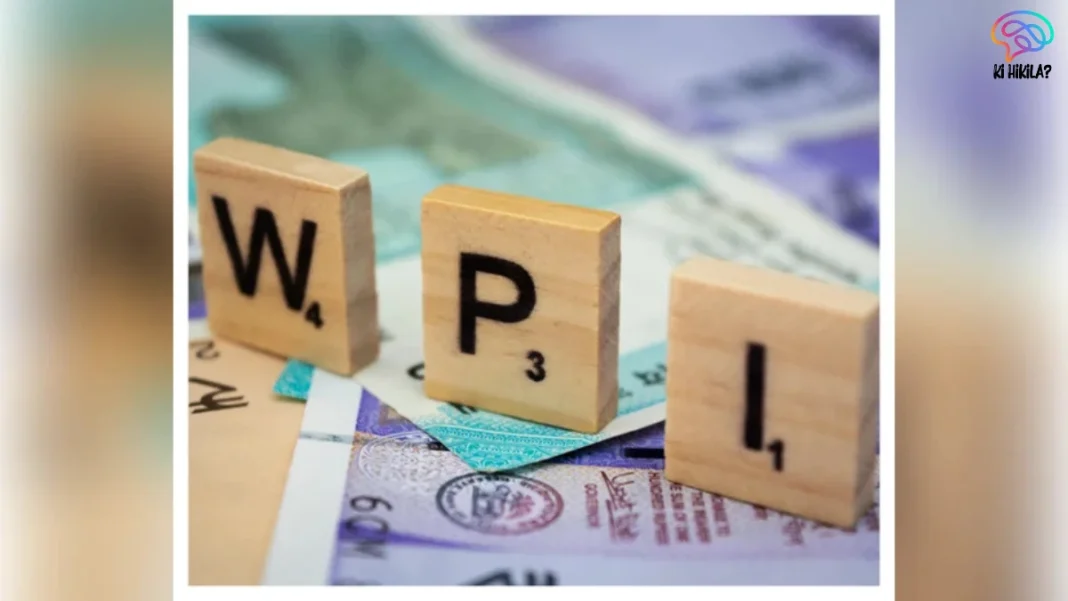WPI Inflation India 2025 recorded a notable decline in July, hitting a two-year low of -0.58%, according to the latest data from the Ministry of Commerce and Industry. This marks the second consecutive month of negative wholesale inflation, primarily led by falling food and fuel prices. However, even as overall inflation turned negative, the prices of manufactured goods moved upward, reflecting a mixed economic scenario.
Understanding the Wholesale Price Index (WPI)
The Wholesale Price Index (WPI) serves as one of the most important indicators of inflation in India, tracking changes in prices of goods at the wholesale level. The index is divided into three broad categories:
- Primary Articles (22.6%)
- Fuel and Power (13.2%)
- Manufactured Products (64.2%)
Together, food items from Primary Articles and Manufactured Products account for nearly 24.4% of the WPI basket. Within these, subgroups such as basic metals, chemicals, textiles, and food products play a crucial role in influencing inflation trends.
The July data highlights that while food and fuel dragged inflation into negative territory, manufactured products sustained moderate inflationary pressures. This balance underscores the complexity of WPI Inflation India 2025, which cannot be viewed through a single lens.
Decline in Food Prices
Food prices played a decisive role in pushing the WPI into deflation. In July, Primary Food Articles declined by 6.29%, marking the third straight month of deflation in this segment.
- Onions: down by a massive 44.4%
- Potatoes: declined by 41.3%
- Vegetables overall: dropped by 28.9%
- Pulses: fell by 15.12%
- Fruits: slipped by 2.65%
- Protein-rich foods (eggs, meat, fish): dipped by 1.09%
Not all food items followed this downward trend. Wheat prices rose by 4.4%, and oil seeds surged by 9.77%, reflecting supply-side imbalances. Such mixed trends indicate that while many essentials became cheaper, specific staples continued to put pressure on household budgets.
Fuel and Power Price Movements
The fuel and power group witnessed a decline of 2.43% in July, further reinforcing the downward movement of WPI. A key factor here was the softness in global commodity prices, particularly mineral oils.
- Petrol: down by 5.7% (14th consecutive monthly decline)
- High-speed diesel: fell by 4.3% (27th consecutive monthly decline)
- Cooking gas (LPG): up by 1.23%, bucking the overall trend
These figures reveal that while transportation fuels became cheaper, household cooking gas costs edged higher, showing divergence within the fuel category. This mixed pattern continues to shape the broader narrative of WPI Inflation India 2025.
Manufactured Products Price Trends
In contrast to food and fuel, manufactured goods showed rising prices, recording an increase of 2.05% in July.
- Apparel: up by 2.5%
- Leather products: rose by 2.57%
- Non-metallic mineral products: up by 2.7%
- Cement and plaster: surged by 3.4%
- Animal oils and fats: though slowing, remained high at 22.04%
Other categories like chemicals, pharmaceuticals, paper, and food products saw relatively slower increases, but they contributed to keeping inflationary pressure alive within the manufacturing sector. This divergence between declining food/fuel and rising manufacturing costs makes WPI Inflation India 2025 a complex scenario for policymakers.
Economic Implications and Outlook

Experts note that the July deflation is largely transitory. The decline was mostly driven by seasonal food price drops and temporary softness in crude oil. Economists predict that WPI inflation will return to positive territory in August 2025, as rising food and crude oil prices, combined with the rupee’s depreciation, exert upward pressure.
Additionally, heavy monsoon rains have impacted the supply of perishable food items, which could reverse the current deflationary trend. The expectation is that WPI Inflation India 2025 has bottomed out and will begin climbing gradually in the months ahead.
Link Between WPI and Retail Inflation
WPI trends often align with retail inflation (measured by the Consumer Price Index – CPI). Retail inflation in July 2025 dropped to an eight-year low of 1.55%, thanks to easing prices of vegetables, pulses, and some fruits. However, edible oil prices remained elevated due to global geopolitical tensions affecting imports.
The moderation in both WPI and CPI inflation supports a more flexible monetary policy stance from the Reserve Bank of India (RBI). With inflation well below the RBI’s target, there is more room for growth-focused measures, which could benefit industry and consumers alike.
Conclusion
The story of WPI Inflation India 2025 in July reflects a nuanced economic picture: overall deflation, cheaper food and fuel, but rising manufacturing costs. While consumers benefited from lower vegetable and fuel prices, producers faced higher input costs, particularly in manufacturing.
Going forward, inflationary pressures are expected to rebound as food prices firm up and global crude oil remains volatile. Policymakers will need to carefully balance growth strategies with inflation management to ensure economic stability.
For now, the dip in WPI inflation provides temporary relief, but experts caution that the road ahead may see renewed price pressures, shaping both industrial output and household expenses in the months to come.



